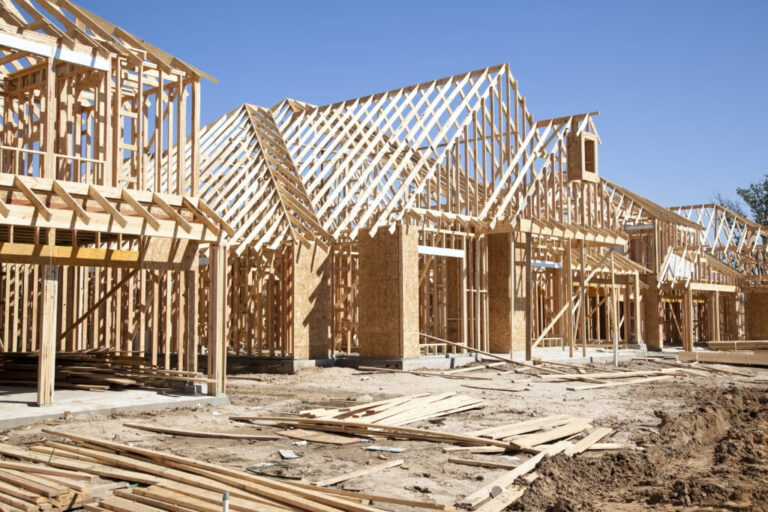By Roland Murphy for AZBEX
In addition to our front-page column on the bell possibly tolling for Proposition 400 renewal in the current session, there is another issue before the Arizona State Legislature in their two-day return to work this week that needs to be looked at: Sen. Steve Kaiser’s (R-District 2) affordable housing zoning revisions.
Readers may recall last year when Kaiser was still serving in the House, he and Democratic State Representative César Chávez proposed legislation that would have prohibited municipalities from using zoning regulations to restrict residential development and enacted “zoning by right” to simplify and accelerate housing development around the state. (AZBEX, Feb. 8, 2022)
That legislation drew fierce and immediate opposition from the League of Arizona Cities and Towns, as well as most individual municipalities, who saw it as an intrusion into local planning control. The bill was withdrawn nearly as quickly as it was introduced, but Kaiser has remained a vocal advocate for shaking up exclusionary local zoning practices.
This Year’s Proposal
In the current session, Kaiser again raised the ire of the League by proposing new legislation that would have given developers permission by right to build multifamily projects on any property near a light rail or streetcar line, significantly revised downward the parking requirements for new multifamily construction, established strict zoning request approval timelines and limited the public comment/opposition timelines and options on planned developments. The changes would have applied in any municipality with more than 25,000 residents.
Over the course of the session, Kaiser and the League have engaged in a lot of negotiation, and Kaiser’s proposal now has its more controversial measures set aside.
Capitol Media Services reported the revised bill, which the League has agreed to support, now applies to cities with populations greater than 50,000 residents. The key points now include:
- Requiring cities to approve Auxiliary Dwelling Units (detached backyard casitas),
- Creating areas in which residents 55+ can rent single rooms in homes with shared kitchens and bathrooms, and
- Allowing developers with approved proposals the ability to create properties without waiting for additional inspections.
Municipalities covered by the law would also have to adopt two of three additional major changes that target infill development. Those changes include:
- Designating acceptable areas for duplex, triplex or quadplex unit construction;
- Allowing the development of manufactured housing communities, and/or
- Allowing home construction on lots as small as 5KSF.
Each city and town would also need to create a housing needs assessment within two years.
Kaiser said the legislation will prompt better use of infill spaces and will benefit the state significantly as it looks for more space- and water-efficient paths to new residential development.
“Dueling” Op-Eds
Readers may also remember a column from a couple of weeks ago in which I took exception to some items in an Arizona Republic opinion and editorial piece by Kevin Erdmann, Gilbert resident and senior affiliated scholar with the Mercatus Center at George Mason University. (AZBEX; May 26)
While I generally agreed with many of Erdmann’s direct statements on the need for increased housing supplies of all types and all price points, I took exception to the headline, “Why building ‘affordable’ units only makes Phoenix’s housing crisis worse,” and an internal subhead that read, “Focusing on ‘affordable’ housing makes it worse.”
I countered these claims with data showing roughly 90% of all new metro Phoenix multifamily development is in the top two tiers of property classes, with workforce affordable and fully affordable making up fewer than 7% of new units.
A few days after the column ran, Erdmann contacted us by email with some very thoughtful follow-up.
Erdmann wrote, “I am sure that you and your readers are keenly aware of the ubiquitous local regulations that make housing development difficult, including zoning rules which limit dense infill development to a small portion of urban land, and which lead to arbitrary opposition to new housing, as in the recently proposed apartments in Chandler.”
Then he said, “Regarding the broader point of my op-ed, state Senator Kaiser has introduced a number of bills meant to make housing development easier in Arizona. Opposition has led to a retraction of many of the reforms in those bills. Previously, one of the reform bills included a substantial loosening of regulations that limit the construction of apartments near the light rail line. Currently, that reform has been reintroduced as SB1161 which would only allow by-right apartments on certain properties near the light rail if they are a subsidized low-income project. As my op-ed argued, slowing down housing development along the light rail line, even in the name of affordability, is unlikely to serve the housing needs of our growing metropolis.”
In my response to his original piece, I raised the possibility that the anti-affordable headlines might have been an editorial choice made by the Republic and not written by Erdmann. He neither confirmed nor denied that. Unfortunately, his op-ed dealt with policy only in the subtext; any policy references were vague and general, at best.
Had the piece included any of the references Erdmann sent in his very gracious response, we would have found very little, beyond the headlines, to disagree with. As with the headlines, we do not know if the original included more detailed points that were cut for length or tone.
I have not contacted Erdmann (yet) to ask about his views on the compromise Kaiser and the League worked out, but it seems he and others opposed to affordable-specific housing policies, might find it, if not a complete solution, then at least more palatable than the previously sought-after mandates.

